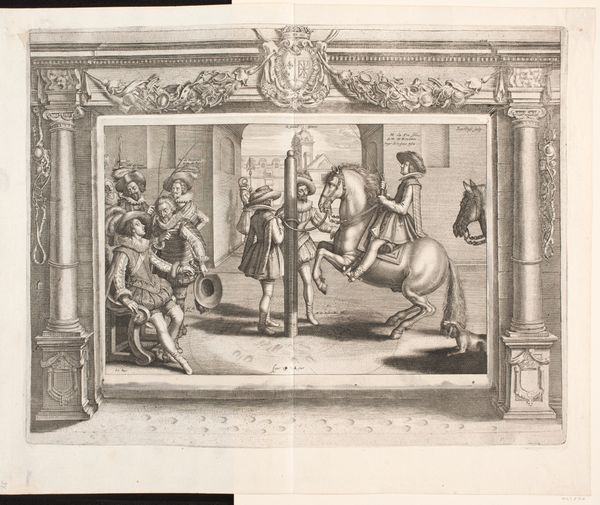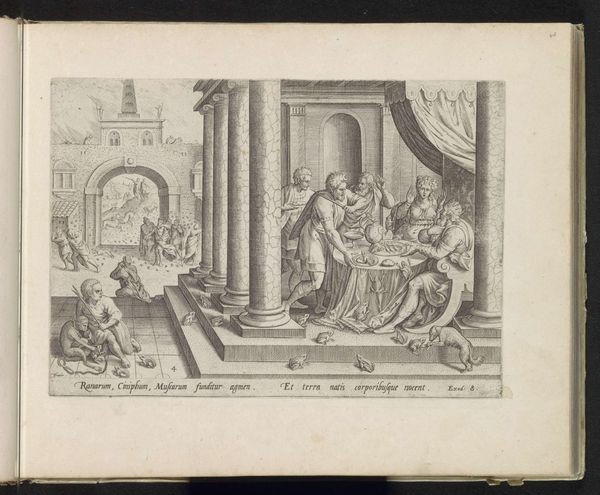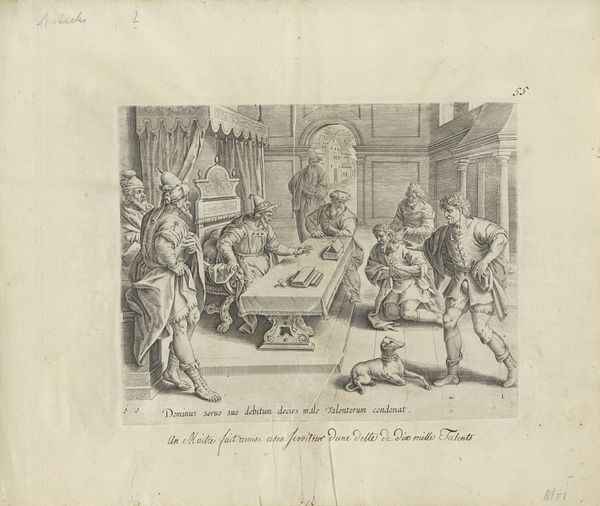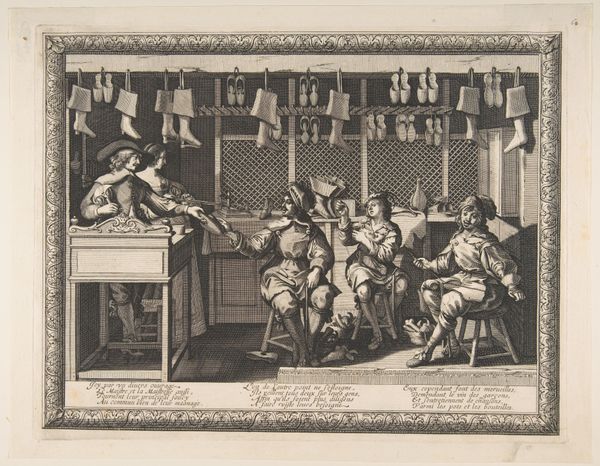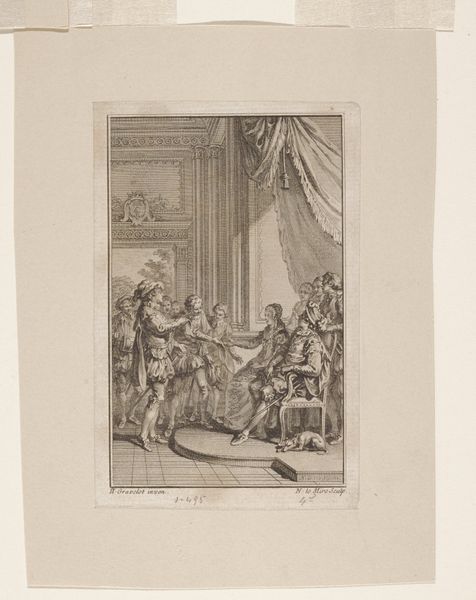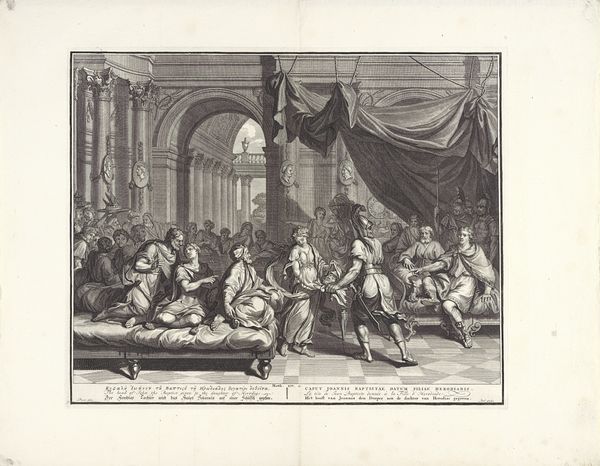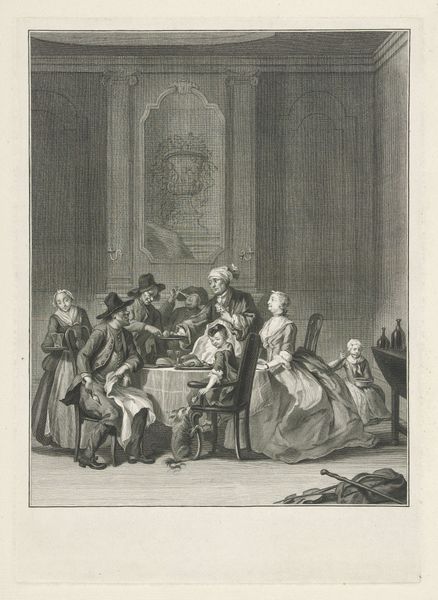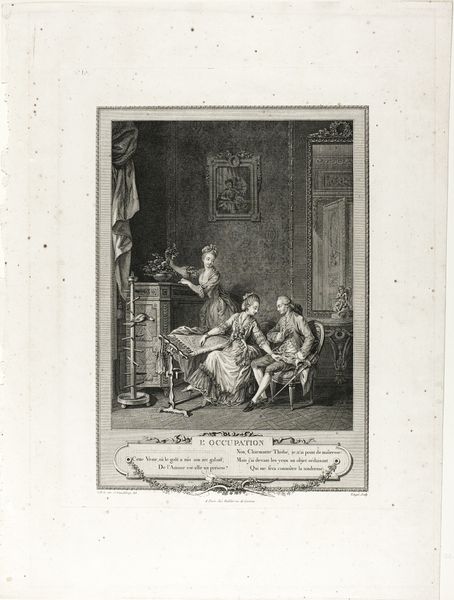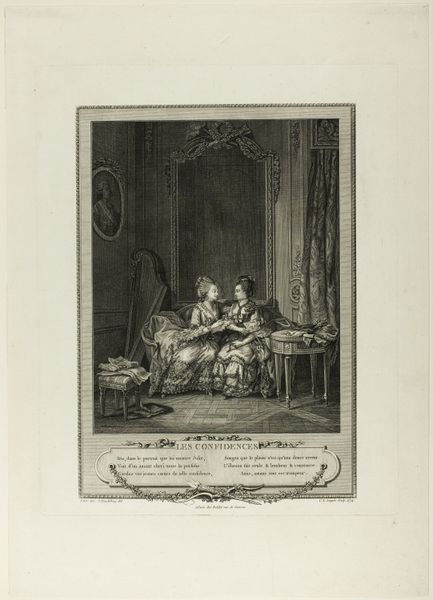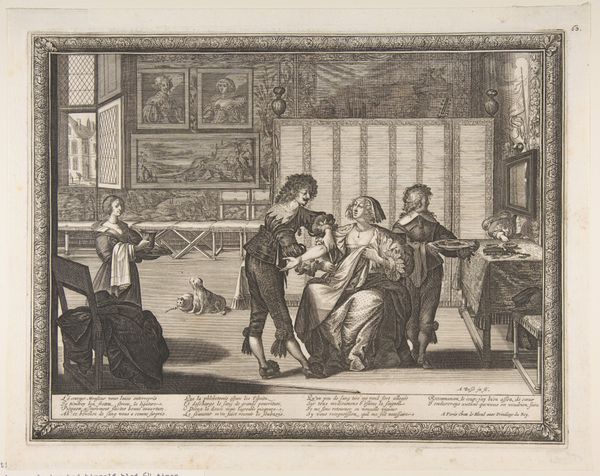
drawing, print, engraving
#
drawing
#
baroque
# print
#
dog
#
old engraving style
#
child
#
men
#
genre-painting
#
history-painting
#
engraving
Dimensions: Plate: 10 11/16 × 13 13/16 in. (27.2 × 35.1 cm) Sheet: 11 13/16 × 14 15/16 in. (30 × 38 cm)
Copyright: Public Domain
Editor: So, this engraving is "Visit of the Nursemaid" by Abraham Bosse, from 1633. I’m struck by the intimate scene, but there’s something staged about it too, like we're looking into a dollhouse. How do you interpret this work? Curator: The "dollhouse" effect is revealing, isn't it? Bosse presents us with a carefully constructed vision of domesticity, one that speaks volumes about gender roles and class hierarchies in 17th-century France. What power dynamics do you see playing out in the arrangement of figures? Editor: Well, the well-dressed women seem to be the center of attention, with the maid almost secondary despite holding a baby. The men are present but sort of off to the sides. Is the positioning intended to mirror societal expectations? Curator: Precisely! This composition reinforces the prevailing social structure where women, particularly those of the bourgeois class, were primarily valued for their roles as wives and mothers, confined to the domestic sphere. But look closer at the maid, what does the act of holding the baby convey? Is it merely about childcare? Editor: I suppose it could symbolize the reliance of the wealthy on the working class to literally prop up their lives, enabling them to maintain their status? Curator: Exactly. The nursemaid’s presence isn't just functional; it highlights the dependence of the privileged on the labor of others, a system often built upon unequal power relations. Bosse, through his artistry, allows us to question these seemingly natural arrangements. Considering the social issues presented, has your initial sense of a "staged" scene shifted? Editor: Definitely! It's like the engraving is exposing a manufactured ideal of domestic bliss that actually obscures deeper social inequalities. I had never considered it that deeply. Curator: Art invites these reflections. By interrogating these historical images, we gain insight into power dynamics that continue to resonate today.
Comments
No comments
Be the first to comment and join the conversation on the ultimate creative platform.
